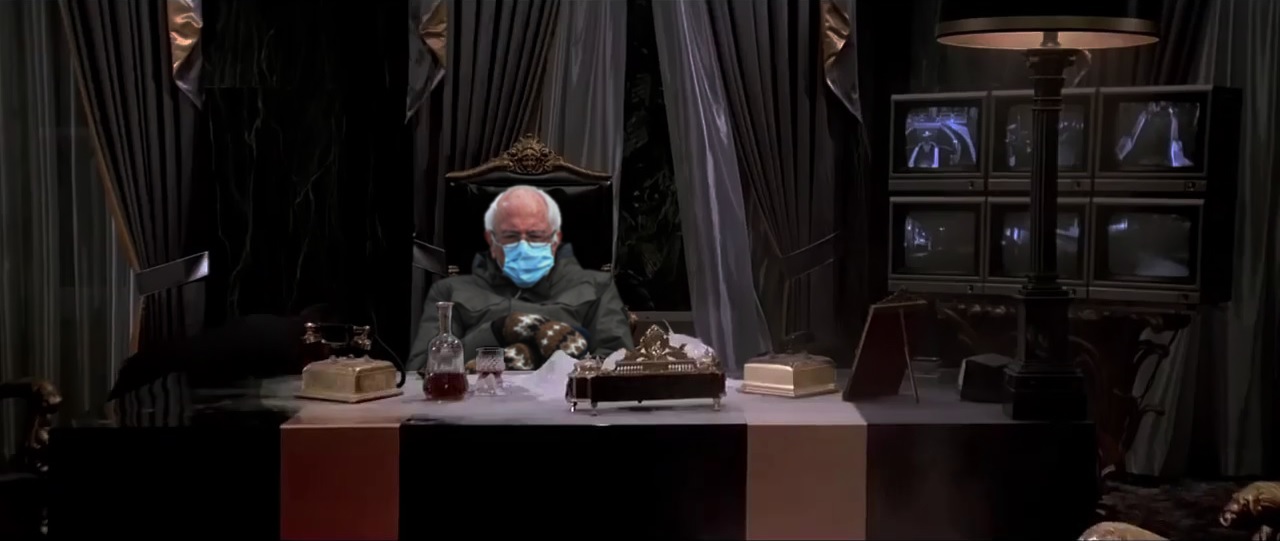
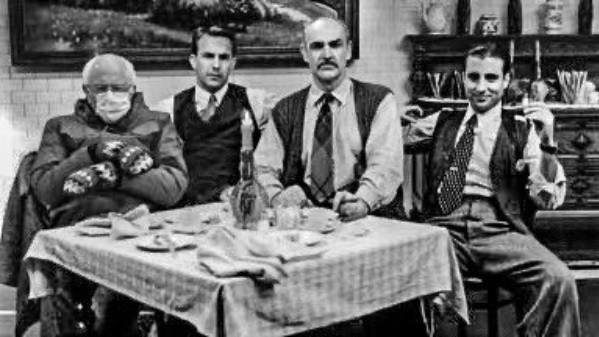
 Hello and welcome to the unofficial Brian De Palma website. Here is the latest news: |
|---|
E-mail
Geoffsongs@aol.com
-------------
Recent Headlines
a la Mod:
Listen to
Donaggio's full score
for Domino online
De Palma/Lehman
rapport at work
in Snakes
De Palma/Lehman
next novel is Terry
De Palma developing
Catch And Kill,
"a horror movie
based on real things
that have happened
in the news"
Supercut video
of De Palma's films
edited by Carl Rodrigue
Washington Post
review of Keesey book
-------------
Exclusive Passion
Interviews:
Brian De Palma
Karoline Herfurth
Leila Rozario
------------
------------
| « | January 2021 | » | ||||
| S | M | T | W | T | F | S |
| 1 | 2 | |||||
| 3 | 4 | 5 | 6 | 7 | 8 | 9 |
| 10 | 11 | 12 | 13 | 14 | 15 | 16 |
| 17 | 18 | 19 | 20 | 21 | 22 | 23 |
| 24 | 25 | 26 | 27 | 28 | 29 | 30 |
| 31 | ||||||
De Palma interviewed
in Paris 2002
De Palma discusses
The Black Dahlia 2006

Enthusiasms...
Alfred Hitchcock
The Master Of Suspense
Sergio Leone
and the Infield
Fly Rule
The Filmmaker Who
Came In From The Cold
Jim Emerson on
Greetings & Hi, Mom!
Scarface: Make Way
For The Bad Guy
Deborah Shelton
Official Web Site
Welcome to the
Offices of Death Records
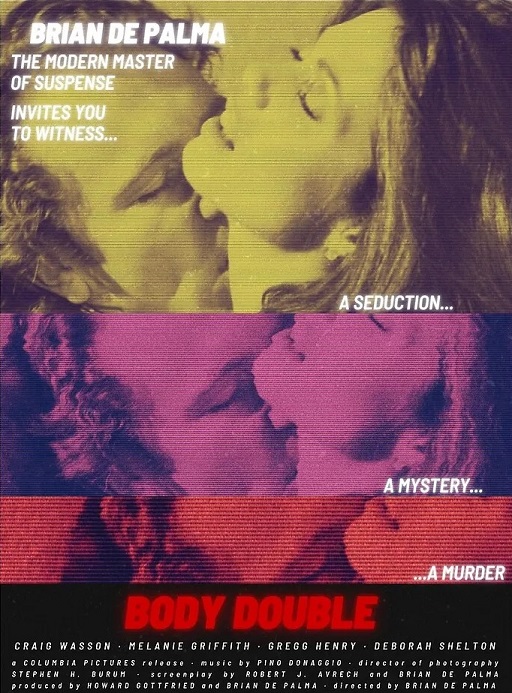
Wasson says he loved working with De Palma. "He's a poet, like [Arthur] Penn. You know, he was speaking in terms of extended metaphors through the whole thing, which I loved. Oh, he was good! We rehearsed like they rehearsed a play-- you know how they tape out the furniture and stuff on the floor while you rehearse the play? We had an open space like that, and we rehearsed for about a week or two, and then we shot, and he very rarely gave direction, because he says, 'Hey, I wouldn't have hired you if I didn't think you could act.' Isn't that great?"
Wasson adds that De Palma wanted them to follow the script, of course, but always with a "What would you do here?" sort of freedom. Using his Jimmy Stewart voice for the podcasters, Wasson says De Palma told him, "I don't want you to do Jimmy Stewart, but I want you to be Jimmy Stewart." It's a terrific interview-- check it out.
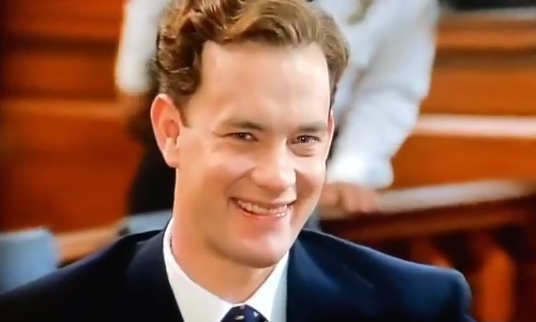
I’m not entirely sure what the hell I just watched, but I have to admit I enjoyed every ridiculous minute of it. I knew nothing about this going in, other than it was a flop and that it was directed by De Palma. I was curious more than anything, but was handsomely rewarded with a film that was ultimately a series of bizarre choices, an impressively eclectic cast, and a tone I still struggle to define. But most importantly, it was a blast. My only major complaint is that Melanie Griffith is obnoxiously annoying as all hell in this. Like really fucking annoying.
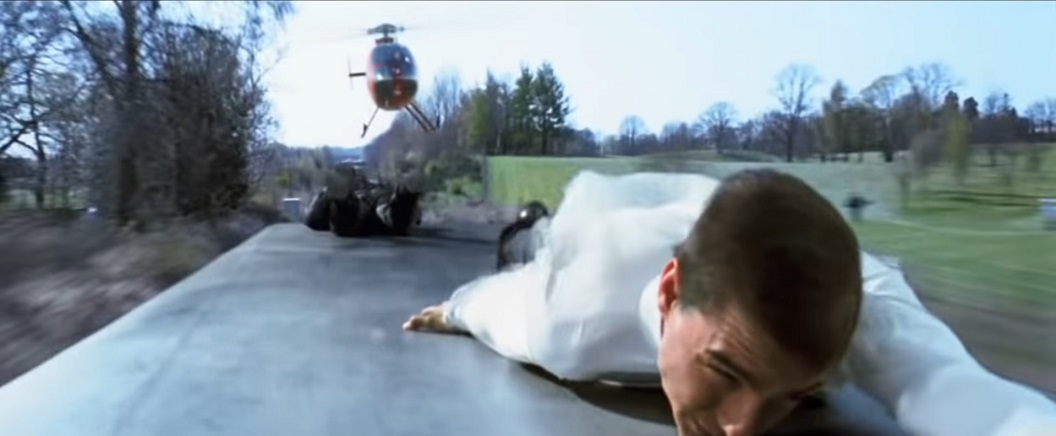
This week we are joined by bestselling novelist Matthew Pearl (“The Dante Club,” “The Poe Shadow”) and we talk about his research into Eliot Ness and the connection he made between “The Untouchables” Odessa steps sequence and the climax of the original “Mission: Impossible.” We discuss other connections between the films, go over some unused script pages, and Pearl brings up a fascinating “Mission: Impossible – Rogue Nation” mystery. Released January 15th, 2020.
However, as I dug around a bit looking for information about the Mission: Impossible train sequence, I found a Bold Entrance article about it that includes quotes from when visual effects supervisor John Knoll was on the Light The Fuse podcast last year, for three episodes...
I haven't listened to these episodes yet, but I plan to this week. In the meantime, here's an excerpt from the Bold Entrance article:
What Makes An Action Sequence Great?According to Cinelinx, Knoll and De Palma researched two of the great action films, Raiders of the Lost Ark and Terminator 2: Judgement Day, for inspiration. Sequences, such as Indiana Jones chasing the Nazi truck carrying the Ark and the truck pursuing John Connor through the canal in Raiders and T2 respectively, provided key insights into the structure of a great action sequence.
These sequences revealed that every element in a great action sequence is well choreographed together. Camera angles, camera movements, vehicle speed, music, the timing of the stunt to provide a suitable payoff for the audience, sound effects, and music all work in concert to turn a good action sequence into a great one. The placement of vehicles (in this case the helicopter and the train) also needed to favor the performance of the actors.
But unlike Raiders and T2, the majority of the train sequence is not shot on location and relied heavily on a soundstage, miniatures, and visual effects. Knoll and the rest of the crew at ILM had to bring their A-game to this sequence in order to bring a level of realism that made the on-location footage indistinguishable from the effects and soundstage footage.
While Knoll and his team created the most realistic effects possible, De Palma decided to limit the use of music for the first few minutes of the sequence to focus on sound effects. The sound of air rushing by at 200 mph helped set the tone for the sequence, and sell its realism. This directorial choice also helped build the scene up to its crescendo when Cruise finally jumps onto the helicopter’s landing skid and the familiar Mission: Impossible theme music emphasizes the climactic payoff.
From Storyboards to Animatics
To help choreograph these elements, Knoll initially worked with De Palma to storyboard the complex sequence. From his work on Star Trek: Generations (1995), Knoll recalled the limitations of storyboarding correct perspectives for complex FX elements in a shot. To solve this on Star Trek, Knoll had built simple CG models of a lot of the assets and did shot design in 3D “so then I’d know for sure that any shot I designed would be correct.”
Knoll soon found it necessary to follow a similar approach on Mission: Impossible.
“[When De Palma] wanted a list of all the camera focal lengths and positions, so there was no guessing on the stage, it seemed like the natural way to do that was to have a CG model of the train and helicopter, and layout those shots in perspective-correct 3D. I did a first pass on that and then, after I had done stills reproducing the storyboards, Brian requested running footage with animatics. This was just like a previs, and it worked tremendously in helping us make the sequence.”
Making the Outrageous Follow the Law of PhysicsMaking the bullet train sequence look good on paper and in animatics was quite different from making it look good in the final sequence. In fact, it was extremely difficult. According to Knoll, Cruise was involved in pre-production on Mission: Impossible, making sure that shots were staged in such a way that the audience knew he was really doing the stunt.
This also meant ILM needed to make sure the combination of live-action and effects didn’t make Cruise look silly. While the physics of the bullet train sequence gets more ridiculous as the scene progresses, Knoll knew it had to look right on screen to the audience. In a recent interview with Light The Fuse podcast, he said:
“Even if audiences can’t tell you what is technically wrong with a shot, if you don’t get the physics right, they can see that something looks wrong. They might not be able to say, ‘Oh well it’s because that object isn’t following a ballistics trajectory.’ It looks wrong to them. So I think it’s always important for us to do our homework, and try and enforce as much scientific rigor on the work that we’re doing as is appropriate. Obviously we do a lot of fantasy things that are theoretically impossible, but I always try to [think], ‘Well if this were real, if there were some mechanism behind it, what would that look like? And I try and let that drive the work.”
Knoll added that even he had misgivings about some of De Palma’s requests for the sequence:“I do remember there was a moment where we’re obviously putting Ethan into a lot of peril in that train sequence and there’s a moment where he’s hanging off the side of the train, and there’s another train coming, and he’s about to get scraped off the side of the train. And Brian wanted Tom to be hanging on the side of the train and then sort of tipped up completely horizontal [even though in normal physics] the drag and the wind would have been pulling him sideways. And I was trying to explain, ‘Well I think he should be at a bit of an angle because if you think about the vector math here, the gravity’s pulling him this way, and then the air drag is pushing him this way. You wouldn’t get completely horizontal.’ And Brian didn’t have a lot of patience for that kind of stuff. He said, ‘We’re making a movie. This is not a physics lesson. Get a life.'”
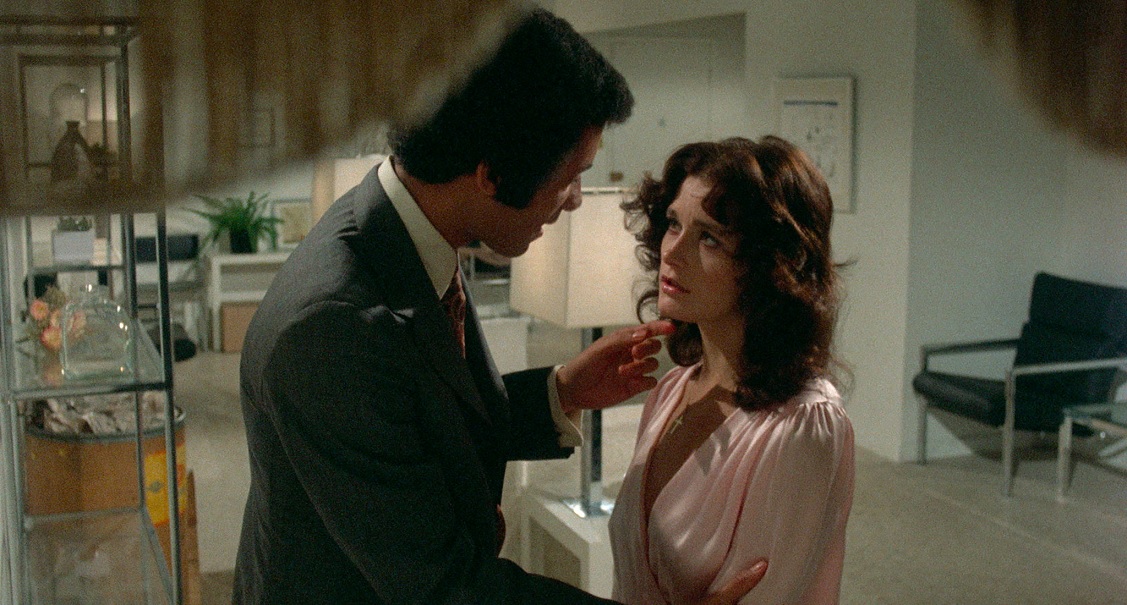
We are joined by the multi-hyphenate, uber-talented writer, actor, director, producer Sujata Day. You may know her best from her role as Sarah on Insecure. But she also recently wrote, directed, and starred in her debut feature Definition Please, about a former spelling bee champion who must reconcile with her family and her past. She joins Katie Walsh to discuss Brian De Palma’s severely underrated Sisters. Katie and Sujata gush over the “bonkers” quality of the film. But Sujata goes further and points to De Palma’s use of split-screens and imaginative filmmaking techniques that directly inspired her work. Sujata also discusses scrappy filmmaking (she shot her film in two weeks), utilizing Indian music, and having complete creative control over low-budget projects.
Barbara Crampton discusses Raw & Body Double with April Wolfe on Switchblade Sisters podcast
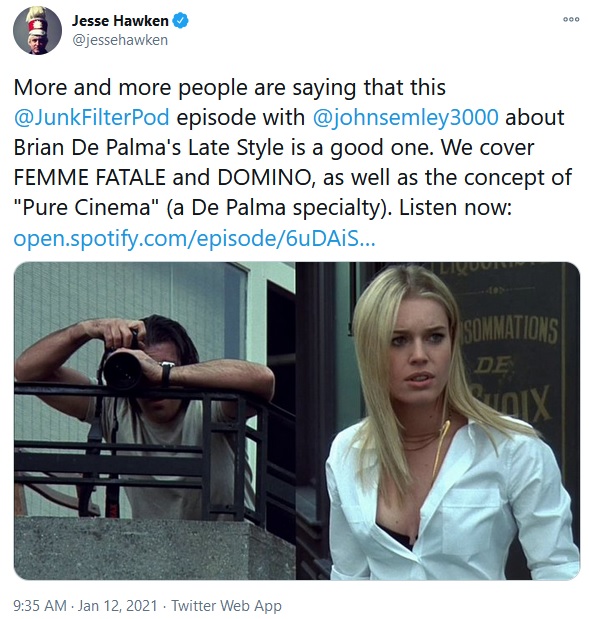
Spoilers abound during our discussion, please watch Femme Fatale before listening as there is a stunning twist you don’t want us to ruin for you. Femme Fatale is currently available to stream on Amazon Prime. No need to watch Domino first, or even at all! For the first of likely several Junk Filter episodes about Brian De Palma, Toronto-based writer John Semley joins the program for a look at two films that bookend De Palma’s post-Hollywood exile in the land of European film financing, 2002’s Femme Fatale (a masterpiece) and 2019’s Domino (not a masterpiece). Along the way we talk about the director’s career-spanning obsessions, the concept of “Pure Cinema”, how Femme Fatale can be compared to Raising Cain and Mulholland Drive, and the plight of the aged auteur with nothing left to prove. Plus John and I try to process the attempted insurrection in Washington and Twitter suspending Trump’s account in the aftermath.


If Obsession was de Palma’s riff on Vertigo, this is his riff on Rear Window, if, at first at least, from a different perspective. The film opens with a strange ‘Peeping Tom’ quiz show in which a real person is tricked into a compromising situation involving opportunities to prey on a vulnerable woman, here played by the iconic Margot Kidder. She pretends to be a blind woman for the show, and in a secretly filmed scenario, contestants have to guess whether the person being covertly filmed is going to grope her or not as she undresses, supposedly unaware of his presence. He doesn’t, and respects her privacy. After the airing of the game show they have a date together that’s going great until Kidder’s ex-husband, played by the phantom himself William Finley being, stupendously creepy, shows up.What follows is a 45 minute set piece that plays like a one act play for half the movie. It involves a slow build to murder and then an investigation when a neighbouring journalist sees the murder. It is unquestionably one of the most tense things I’ve ever seen as de Palma utilises his trademark split screen with the utmost aplomb with amazing visual storytelling. It at many moments plays out like the opening of Orson Welles’ Touch of Evil, which de Palma had already homaged in his movie Phantom of the Paradise, except it uses edits to juxtapose two separate plotlines playing out tangentially in real time, (where Phantom of the Paradise uses much longer takes), this lets the audience make the sums in their head as to who will get away with what, winding the tension like a ratchet. The actual editing on show here, by Hollywood legend and editor of Star Wars, Paul Hirsch, is astonishing. If you know anything about Star Wars‘s making, Paul Hirsch and Brian de Palma, amongst several other people who are not George Lucas, are the sole reason Star Wars is a well edited film, and their skill comes together here in a showcase of some of the best editing you will ever, ever see. I almost think this would be my favourite de Palma if the whole movie played out like this first half, keeping in one apartment, as a journalist who has justifiably criticised the police force is constantly ignored by them until she can uncover murder, which is what the plot of this first half is, and it’s insane and it’s intense.
The rest of the movie is still par excellence as you’d expect from de Palma. It plays out for a time almost like a preemptive to Argento’s Deep Red, with our protagonist trying to make it as a female journalist and bumping up against colourful characters who she negotiates to try to get to the bottom of this mystery. She eventually makes it to a mental ward where Margot Kidder is now becoming institutionalised and things get… weird…
So where to describe the appeals of this movie? In order to do that you somewhat have to talk about it as two different movies.
In the movie it is for most of its runtime and first, it’s a tense, knuckle-whitening thriller that explores typical de Palma themes of police corruption. Part of the reason the cops are loathe to investigate this murder is that it’s the murder of a black man, reported by a woman who we are introduced to, looking for all the world like Jane Fonda in the middle of her revolutionary period, with columns pinned on the wall about how police have failed at their jobs and suppressed people of colour in America. The storytelling is impeccable, making sure, in the way that de Palma does, that each and every element is kept track of for the audience at every moment. It means that as an audience you have to do virtually no work but it’s still at atmosphere you could cut like a knife, in part because you’re wondering how this all plays out, but also because it just plays out like a Swiss watch in how each element moves absolutely perfectly. Margot Kidder as usual plays beautifully with a challenging role in a genre picture, making the most of some very difficult scenes. Even after the first 45 minutes end and we follow a more conventional mystery narrative, the storytelling is beautifully maintained, leading up to the climax, at which point very few of the remaining threads matter too much as it takes on a whole new tone…
So, I want to talk about the third act, but to do so would be majorly spoiler heavy, so I’m going to try to keep this brief and vague. The third act gets… psychedelic. It changes to flashbacks filmed in black and white that, while trying to evoke real photography we’ve been shown earlier in the picture, takes place entirely in the mental space of a character. So much of the third act revolves around breaking down the boundary between reality and fantasy. Breaking down the boundaries between what is imagined and what is real, and how much that boundary even matters. It involves hypnosis leading to not one, but two fascinating and haunting codas. What’s fascinating about this climax is how much it moves into pure psychological space. It’s a film that starts as an incredibly grounded riff on The Bird With The Crystal Plumage via Rear Window, and ends more like Carnival of Souls… It’s mildly astonishing, if over-exposited for my tastes, and made with a killer eye to style, within quite low budget confines.
So that’s Sisters, it’s the first movie where de Palma tried to make a movie with the kind of polish that he’d make his own and it is the perfect meeting between the anarchist, revolutionary, unconventional and difficult de Palma that I love, and the more straightforward and stylish de Palma that I like and everyone loves. Its appeals are hard to describe in words, because they are purely visceral. Sisters is a film you watch, not explain, so go watch it. It’s [f**king] great.

Meanwhile, the blogger CineMama, disappointed with Wonder Woman 1984, picks three movies to watch instead: Mike Nichols' Working Girl, Christopher Landon's Happy Death Day 2U, and Brian De Palma's Scarface. "Like many viewers impressed by Wonder Woman 1984‘s marketing campaign," CineMama begins, "the actual film disappointed me. Potential for both an ’80s working comedy (the kind with big hair and sexist bosses) and an epic tearjerker fell by the wayside and left me craving movies with a clearer vision. These three movies each include plot or style elements similar to WW84‘s, but where WW84 stumbles, these movies soar."
CineMama adds, "A side note: I enjoy the 'before/after/instead of' format because instead of focusing negative energy on just tearing a film apart or writing a 'review' that solely compares a movie to other movies, I focus on the parts that most resonate with me and build upon that by lifting up other films."
Regarding Scarface, then, CineMama writes:
In WW84, the lead villain, Max Lord (Pedro Pascal) trades his physical well-being to a “Dreamstone” for the ability to grant wishes. He announces to Wonder Woman at one point in his wish-fulfilling frenzy, “The world belongs to me!” which reminded me of the words that encourage and eventually taunt Tony Montana (Al Pacino) in Scarface: The world is yours.A Cuban refugee working at a restaurant in Miami, Scarface‘s Tony Montana believes that he’s meant for more than his blue-collar existence and gets heavily involved in drug trafficking. He builds an empire of riches, but unsurprisingly, like a Faustian tale, he pays the bloody price for his success. The world is yours, but at what cost?
Similarly, Max Lord in WW84, born Maxwell Lorenzano, came from a poor background and wanted an immensely better life for himself and his son. Though he finds power through the Dreamstone, the abilities bequeathed to him cause massive chaos both personally and on a wider scale. Lord’s physical health deteriorates and the world descends into madness as he instructs anyone who will listen: “You can have it all; you just have to want it!”